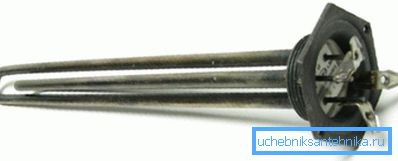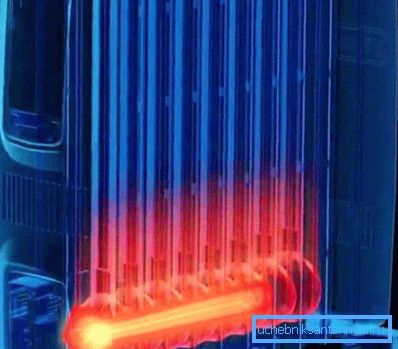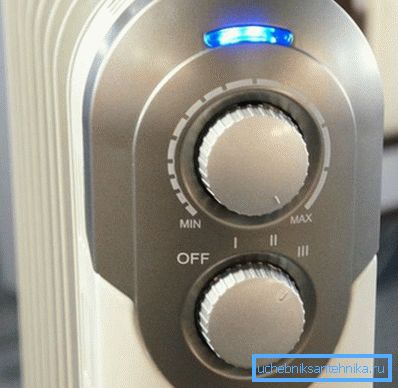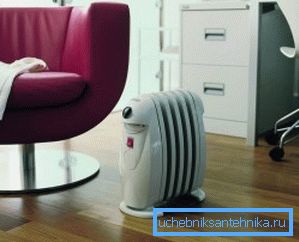We choose oil heating radiators for homes and apartments
How to quickly heat a room if central heating fails? You can use various electrical devices, but the trouble is, they quickly burn oxygen in the room (we are not talking about infrared equipment). This is especially noticeable with devices with an open heating filament. Today, the “guests” of our article will be floor and wall mounted oil radiators that do not have this problem.

Before starting the review, I would like to say that this equipment will not force you to give all your earned money for heating, thanks to the installed thermal sensor. You will only need to correctly calculate the number of sections on the device.
Kinds
The work scheme of any oil heater is of the same type:
- The basis is sealed steel or aluminum housing.

- Inside there is a conventional tubular heating element with a spiral inside, which is immersed in mineral oil.
- After turning on the power supply, the heating element heats up the oil and due to the occurrence of convection currents, heat is evenly distributed over the surface of the device.

- A regulator is installed in the power supply circuit of the heating element, which has either two positions (less or more heating) or a rheostat (a smooth increase or decrease in power). Both variants act simultaneously as thermostats. When the device reaches the set temperature, it turns off, and after a while it turns on again. Staged power controls with specified parameters can also be installed.
Different wall devices from the floor only mount. In addition, a large number of models can be universal, for them, specifically in the kit there are brackets for installation work of various types. You can easily fix them with your own hands.
In fact, you are presented with a conventional mobile radiator, where the coolant is oil, and the source of energy is electricity.
Tip: some models are equipped with additional options that allow you to program the device for a day, control the radiator remotely (remote control), and also conduct visual monitoring of the temperature through a digital indicator.
The price of heaters is not so high, it depends on its size, installation, number of sections and additional options (find out here what the steel radiators are Kermi).

Pros and cons of devices
Any equipment has positive and negative qualities, so they need to know before you go to the store for the goods:
| Positive |
|
| Negative |
|
How to choose an oil cooler
Specifications
- Using the built-in thermostat system allows you to actually save electricity. The device in this case will give only as much heat energy as is necessary to maintain a comfortable temperature. The use of manual adjustment of the rheostat will not allow you to accurately maintain the optimal microclimate, since the temperature in the room also depends on the weather outside the window.

- We recommend to refuse cheap devices of little-known manufacturers, simply for security reasons. In addition, the calibration of the thermostat in them does not meet the realities.
- Although digital stuffing improves the comfort of operation of the device, many believe that this reduces its reliability. A conventional bimetal plate relay, which works flawlessly, will be quite enough. The microprocessor does not like elevated temperature, so their life is greatly reduced with constant heating.
Power
Below is a guideline for its selection:
- In standard dimensions, the height of the room is 2.5 m. In this case, 1 kW of energy is enough to heat 10 m.2 the premises. For example, a 2.5 kW device is designed for installation in a room of 25 m2.
- Another way to count, if you have a non-standard ceiling height, the following - by 1 m3 required to spend 40 watts.
- In contrast to an apartment, in a private house it is necessary to add 50% to standard calculations, since it has exterior walls, not warm neighborhood apartments.

Light: in the northern regions, to the standard figures should be added coefficients 1.5-2, which depend on climate.
Conclusion
The oil radiator at the time was an interesting additional device that made it possible to get a comfortable temperature in the room if the central heating did not fulfill its task. The main thing is to correctly calculate the power of the device relative to the area of the room (see also the article Vertical heating radiators - a combination of beauty and efficiency).
The video in the article will help you find additional information on this topic.